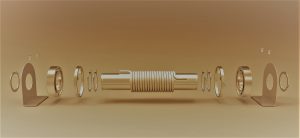 When it comes to garage doors, you probably don’t realize it, but it’s really not the opener that does the heavy lifting, but it’s the garage door springs. They provide a counterbalance to the weight of the garage door so that the door can be lifted easily and effortlessly. If your springs aren’t working, then don’t try and lift the door yourself. You’ll need a professional bodybuilder on call to lift the door up for you because the average person can’t lift that much weight. The last thing you need when you’re trying to leave your home to go somewhere is to pull some type of muscle. Make sure he bends at the knees.
When it comes to garage doors, you probably don’t realize it, but it’s really not the opener that does the heavy lifting, but it’s the garage door springs. They provide a counterbalance to the weight of the garage door so that the door can be lifted easily and effortlessly. If your springs aren’t working, then don’t try and lift the door yourself. You’ll need a professional bodybuilder on call to lift the door up for you because the average person can’t lift that much weight. The last thing you need when you’re trying to leave your home to go somewhere is to pull some type of muscle. Make sure he bends at the knees.
So we’ve talked about what the garage door springs do, but there’s a lot more to know about them.
First, there are two different types of garage door springs: the Torsion spring and the Extension spring. For our discussion right now we’re just going to concentrate on the Torsion spring.
It might be hard to wrap your mind around what a torsion spring really does, but a familiar example of a torsion spring is the one used in mousetraps; the force unleashed by that torsion spring will snap a poor mouse in two if it tries to grab the cheese. These aren’t cartoon mice that can dodge the spring. They’re the real deal and it’s game over for them.
When it comes to garage door torsion springs, we’re talking about something far more powerful that is unleashed by a much bigger, thicker spring. That’s why it’s highly advisable to leave it up to garage door technicians to take care of any spring issues apart from lubricating your springs at regular intervals. Imagine a projectile object flying out with you with that much force! To say it wouldn’t end well is a gross understatement.
This spring doesn’t just hang out there by itself; they’re threaded around a torsion tube that extends the length of the garage door and is mounted on either side by bearing plates as well as a supported by a stationary cone and center bearing support bracket in the center. The garage door cables also come into play, with the cable drums that are on either end of the tube.
Next the springs themselves are the winding cones; the springs are attached to the winding cones and the springs are wound in opposite directions.
If you’re befuddled by the idea of counterbalance, winding and unwinding and so forth, you’re definitely not someone who should be trying to install a garage door spring by yourself. Contact a local, certified garage door technician to help you.
